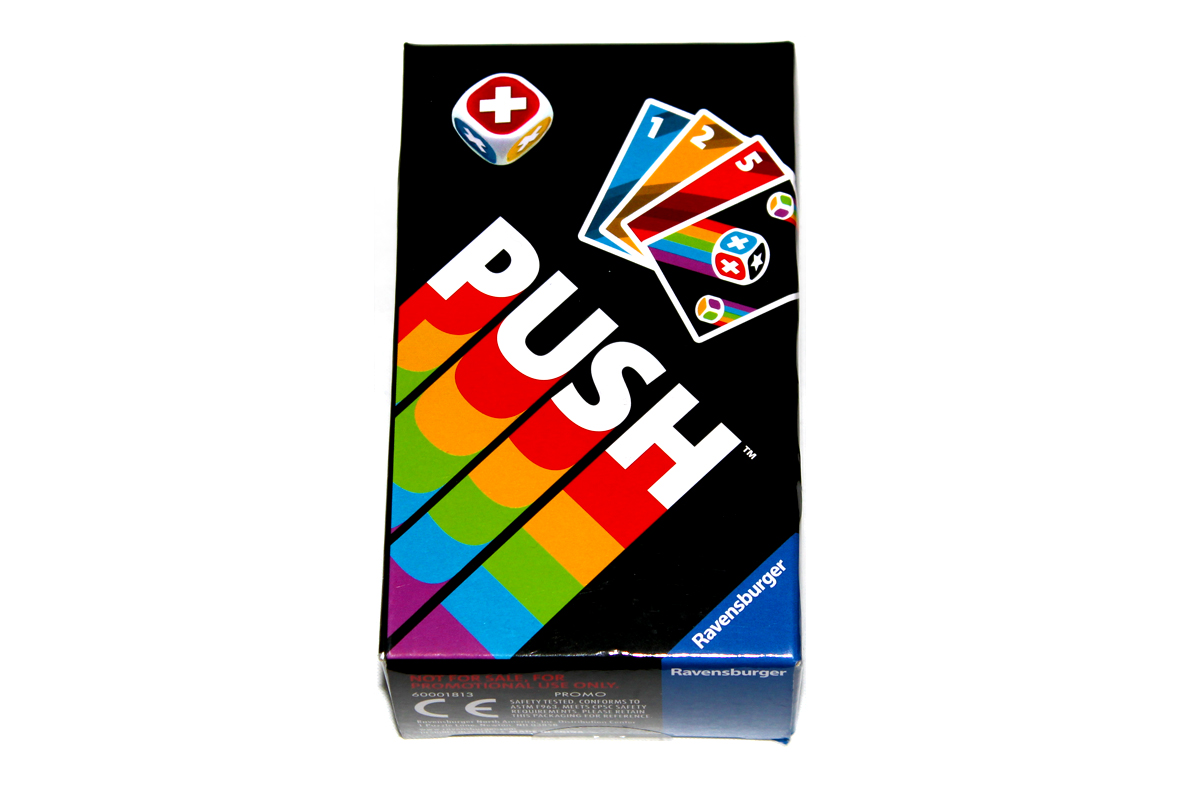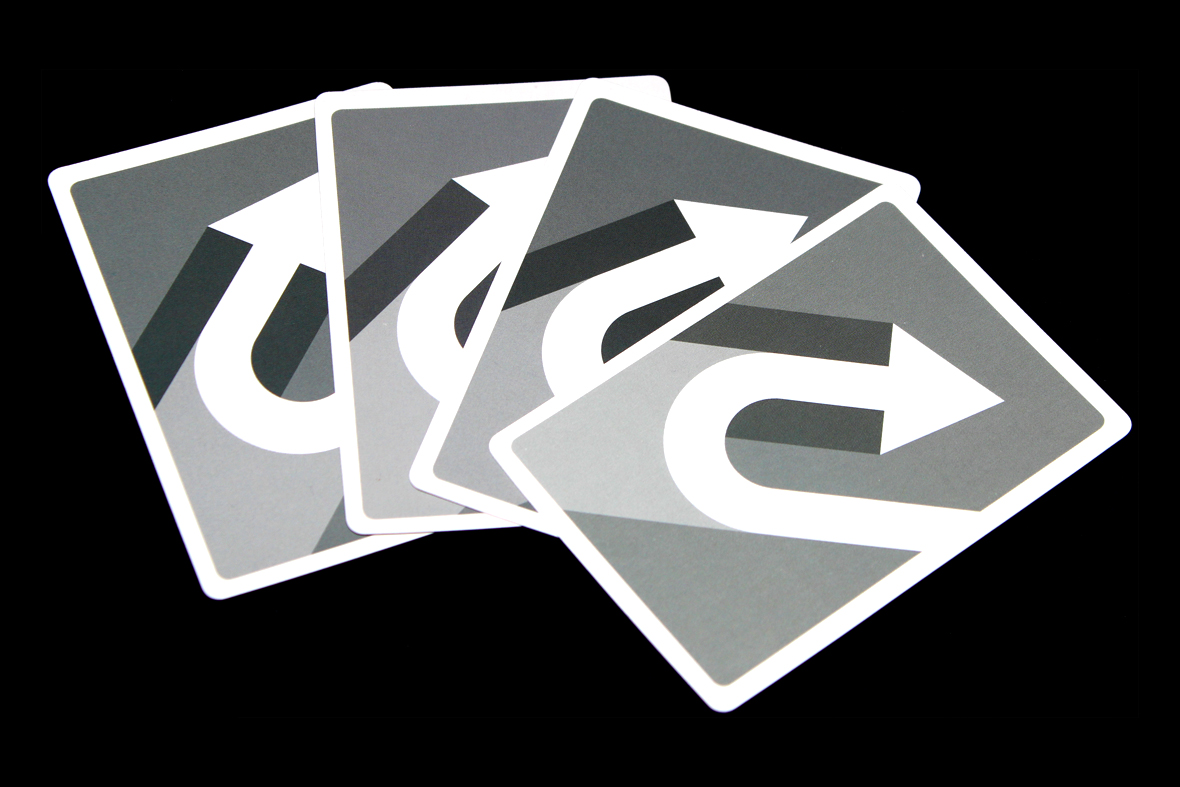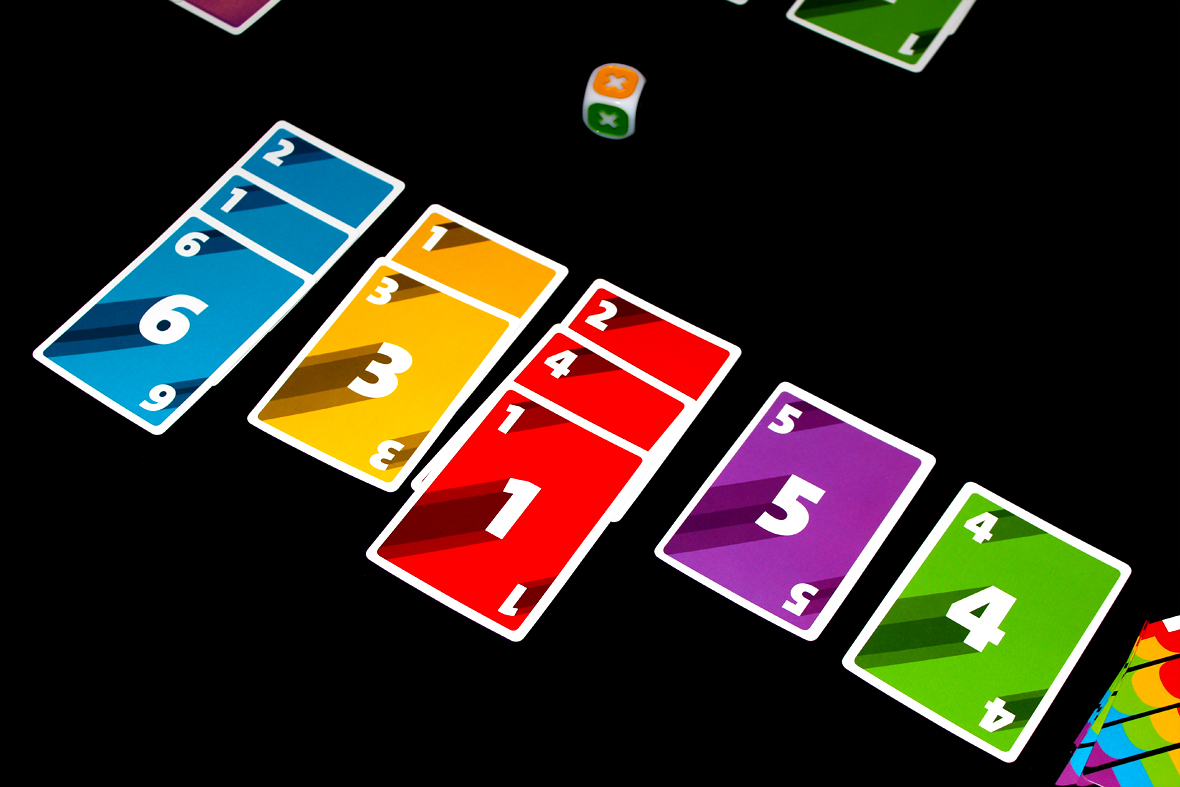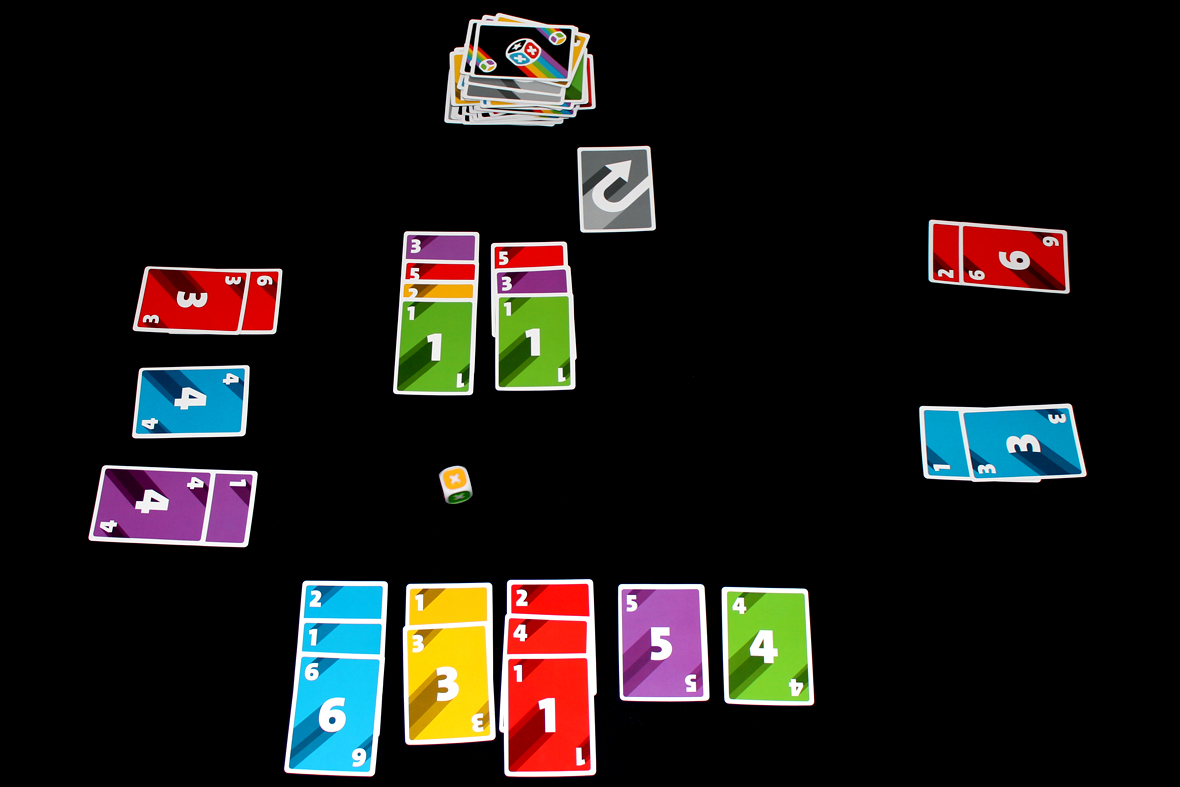
Base price: $13.
2 – 6 players.
Play time: 20 – 25 minutes.
BGG | Board Game Atlas
Buy on Amazon (via What’s Eric Playing?)
Logged plays: 5
A game is even more fun when you review it twice. I’ve started doing some side, smaller-form reviews on Be Bold Games when I have some free time, and I wrote up PUSH on there a little while ago. Bebo handled the photography, did a great job, and then I had some more free time so I figured I’d dive in all the way over here and give you the usual run-down. I think that makes sense, but we’ll see what y’all think of that as a paradigm moving forward. I assume it’ll happen more than once. I know for certain that there’s Just One more review coming, at least.
In PUSH, you’re trying to push your luck to score points against your opponents who are, as you might guess, doing the exact same thing. Just be careful, as if you push too far, you might lose big (or lose everything)! Will you be able to best your opponents and run away with a high score? Or will your luck run out?
Contents
Setup
Not much to say on setup. Set out the die:

Shuffle the cards:

If you’re playing at two players you can safely remove the Reverse cards; they aren’t going to do a whole lot for you:

Beyond that, you’re ready to roll.
Gameplay

So, a game of PUSH is played until the deck runs out, then the player with the most points wins. But how do you get points?

Each player, on their turn, can push or bank. I’ll talk about banking in a second. When you push, you start drawing cards from the deck. You can stop whenever you want, but you must draw them one at a time and assign them to one of three columns. The only rules are:
- A column may not hold two cards of the same color.
- A column may not hold two cards with the same number.
- A column may not hold two of the same card.
Beyond that, you’re essentially golden. There are two special kinds of cards: Roll cards and Reverse cards. When you get a reverse, set it out so it’s visible, but don’t add it to a column. Do this for every Reverse you draw on your turn. Roll cards must be added to a column:

Once you’re done drawing cards, you take a column of cards of your choice and add it to the area in front of you, called your bench. The players following you in clockwise order must each then choose a column to take. No player can take more than one column, so in a two-player game, the second player will pick a column and the third column (if present) will be discarded. If there are an odd number of Reverse cards face-up from the turn, the order in which players after you choose cards is reversed (counterclockwise instead of clockwise).

If a player gets a Roll card, they must roll the die — if it shows a color present on their Bench, they must discard all cards of that color. Rough. If you roll the black star, you’re safe.
If you draw a card you cannot play, you bust. You take no cards, and the players after you choose from the three columns as normal. As a penalty, you must now roll the die and discard cards accordingly.

If you’d prefer not to roll on your turn, you may bank instead. If you bank, take a set of cards of one color and set them aside, face-down. These cards still belong to you, but are out of play and cannot be discarded by a Roll card or a Bust.

Play continues until the deck runs out, at which point players take their banked cards and their bench cards and add their values together. The player with the most points wins!
For players that really want to cause lifestyle problems for themselves, they can play with an optional variant that changes the black star from “safe” to “lose all your Benched cards“. Cruel, but efficient.
Player Count Differences
None, really. You don’t have an intense amount of control over what other players get from you unless you try to maximize when you stop in order to give other players Roll cards. A truly cruel move is to bust when you have very little in your bench and there are three Roll cards (one in each column) so that four players total have to roll this turn. I would say the game plays quickly enough that the specifics of player count aren’t really a big deal. At two, it’s a bit weird (since you ignore the Reverse cards), but it’s still pretty fun. No real preference.
Strategy
- I usually bank once I have 10 or more points in something. Beyond that and you’re pushing a pretty heavy risk, especially as other players will start to target you if they can. It’s not worth losing all those points, even to potentially get more points on a later turn. Bird in the hand and all that.
- Try to gift your opponents as many Roll cards as possible. You basically want them rolling every turn, if you can, so you can try and wreck their benched points. The more they lose, the fewer points you have to get in order to win. It’s pretty … straightforward.
- I kind of use each subsequent column as a dumping ground. If I have low-value cards or Roll cards, I’ll put them in the second or third column, when I can. The first low-value cards of a color will generally go in the column I want to take, though; the cards are random, so, take what you can get.
- I tend to stop pushing once I see three of the same anything. Until then, busting is highly unlikely, since you usually have a place you can put a card (there are some exceptions to this; I’ll leave those as an exercise for the reader). Once you have three of some condition, there is an entire category of cards that are automatic busts.
Pros, Mehs, and Cons
Pros
- Quick to learn. It’s one of those very fast games you can keep in a bag or in a nightstand or something. I think I compared it to UNO in my review for Bebo and I stand by that.
- Bold. It’s a very vibrantly-colored game, and that’s nice. It attracts the eye, looks great on the table, and is generally very pleasant to look at. I just wish it used better visual accessibility cues.
- The die is also really nice. It’s a pretty hefty production and it’s very bright and nice to look at. I kind of wish I could come up with a way to use it in other games. It’d certainly improve Candyland, if nothing else.
- Plays quickly. It’s only about 20 minutes, tops; even quicker if you’re playing with generally speedy players, which I usually do.
- Portable. It doesn’t take up much space when it plays (like three or four columns of cards) and the box isn’t very big, either. You could take this most places with you. Which is kind of my worry, as as of time of writing I don’t exactly know where it is. I’ll find it, but, that’s an issue.
- The variant play is pretty devious. It’s stressful to run the risk of losing all your cards and that definitely affects gameplay, which I appreciate. It’s a nice way to amp up the game. Players start behaving much more conservatively if they think they might have to roll if they mess up (and if they think they might lose all their benched cards if they have to roll).
Mehs
- The box leaves a bit to be desired. This isn’t the standard box it comes with, though; I think that one has a visible place for the die rather than just kinda inserting it into the box with a little cardboard bit.
Cons
- I haven’t checked it for accessibility, but it would be nice if it weren’t singly-coded on color. The cards are the exact same, save for their color. No shapes or anything to help a player with a color vision deficiency, which is pretty frustrating. It’s sort of a must-do in games, these days.
- I mean, there’s not a ton of strategy to this game. It’s not really meant for that, though; it’s a quick family game that you can pick up, play with everyone, and set back down. As far as high-strategy goes, yeah, you’re not gonna find it here; the player that wins is generally the player that tends to roll the best (in that they aren’t burning their most valuable cards).
Overall: 7.5 / 10

Yeah, overall, I think PUSH is a fun little family game! It’s the perfect gift to get your family if you’re trying to wean them off of older games and into newer stuff; it’s non-offensive, not terribly difficult to learn, and you can get through a few games pretty quickly with no problems whatsoever. I think it’s important, however, to view this game in the context of what it’s trying to be — it’s not going to replace much in your collection, and I’m not put out by it (they gave it out for free to BGG.CON attendees). Instead, it’s a perfectly reasonable attempt to bridge the gap between older and more modern games, and I’m fond of it in that context. If you’re looking for a light push-your-luck game without much more to it, PUSH is certainly a solid choice to check out!
Hi Eric. Love your blog, some great reviews out there, very interesting to read. Do you prefer Coloretto to Push? The games look quite similar, if you were to choose one, which one would you choose?
LikeLiked by 1 person
I do! Coloretto, for sure.
LikeLike
How many times can you bank your cards , is there a limit?
LikeLiked by 1 person
Nope
LikeLike